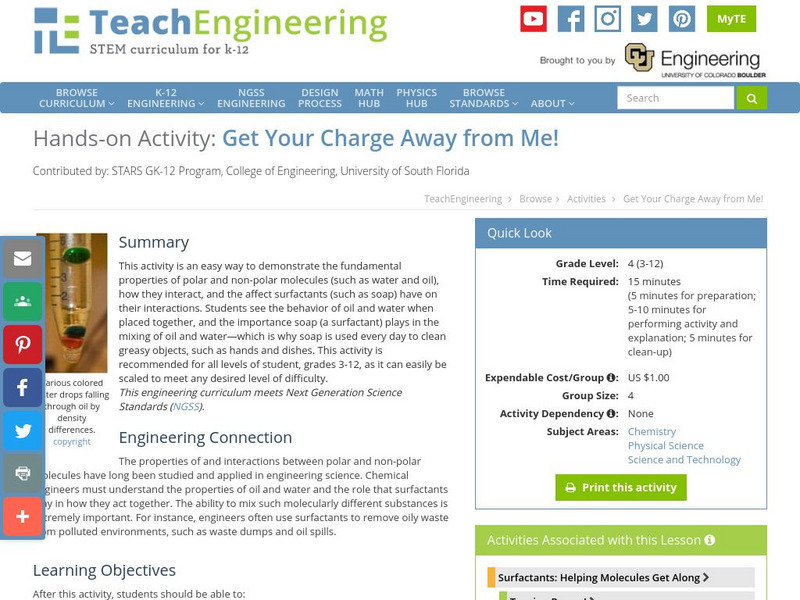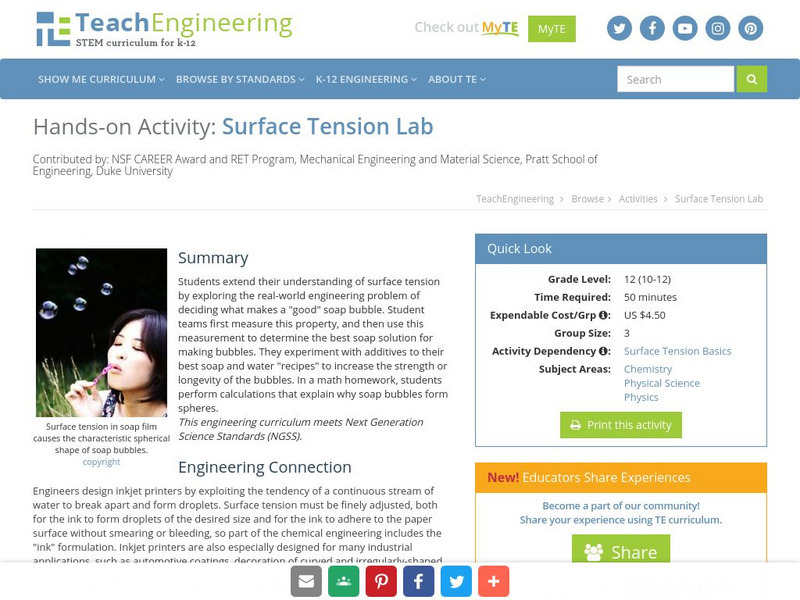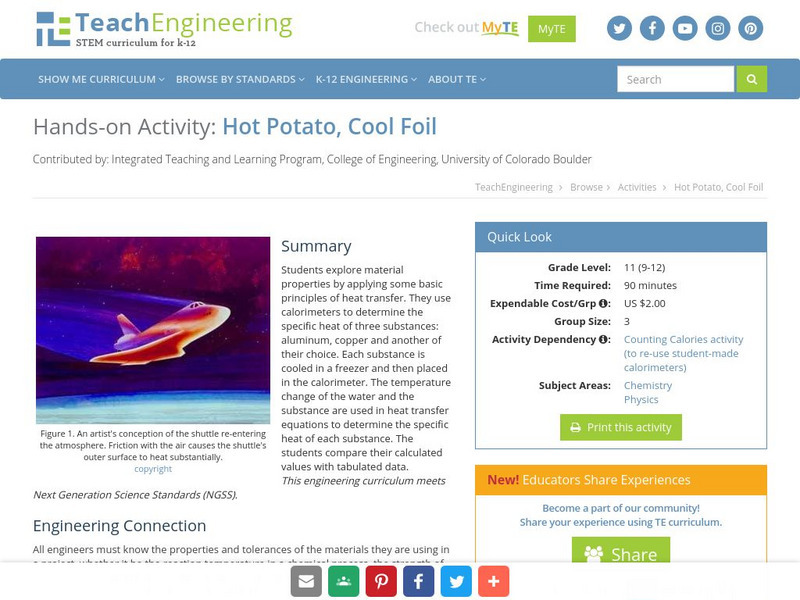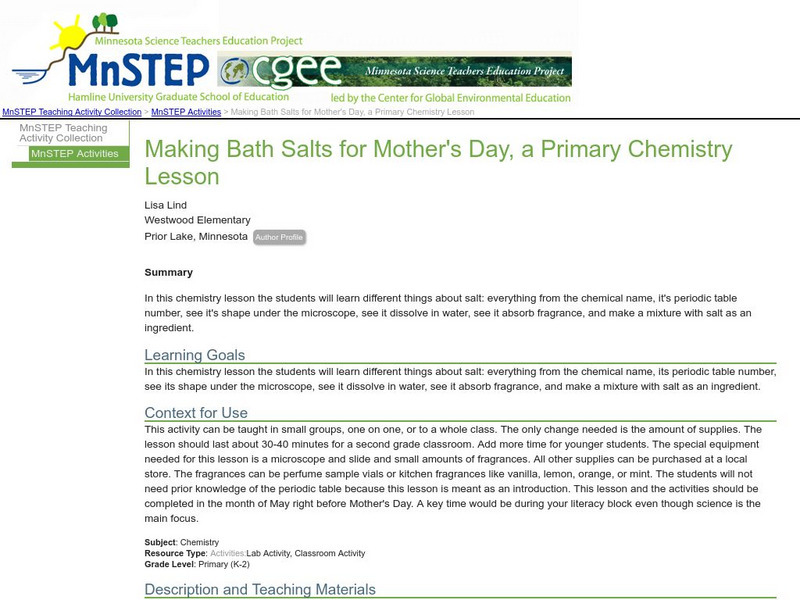Hi, what do you want to do?
American Chemical Society
American Chemical Society: Best of Wonder Science: Ice of a Different Color [Pdf]
An experiment to test what happens to water when salt or sugar is added and it is then frozen into ice cubes. Students also explore the ice's physical properties by rubbing cubes on sandpaper and dropping a heavy object on each type.
TeachEngineering
Teach Engineering: Get Your Charge Away From Me!
This activity is an easy way to demonstrate the fundamental properties of polar and non-polar molecules (such as water and oil), how they interact, and the affect surfactants (such as soap) have on their interactions. Students see the...
OpenStax
Open Stax: Anatomy & Physiology: Body Fluids and Fluid Compartments
Learn about the chemical and physical characteristics of the fluids that make up the human body.
Other
Chemical Education Digital Library: Carbonic Acid H2 Co3
A 360 degrees view virtual model of a carbonic acid molecule. Students can manipulate the model to explore its properties.
TeachEngineering
Teach Engineering: Surface Tension Lab
Students extend their understanding of surface tension by exploring the real-world engineering problem of deciding what makes a "good" soap bubble. Student teams first measure this property, and then use this measurement to determine the...
TeachEngineering
Teach Engineering: Hot Potato, Cool Foil
Students explore material properties by applying some basic principles of heat transfer. They use calorimeters to determine the specific heat of three substances: aluminum, copper and another of their choice. Each substance is cooled in...
Other
Science House: Ice Cream
Experiment shows students how to use the lowered freezing point of water to chill another mixture (ice cream) to the solid state. Teacher's notes provide background information.
Indiana University
Indiana University Bloomington: Reference Documents: Calcite [Pdf]
A fact card describing the characteristics of calcite and its presence in limestone, its chemical and physical properties, and the composition and structure of a calcite unit cell.
Indiana University
Indiana Univ. Bloomington: Reference Documents: Pyrite "Fool's Gold" [Pdf]
A fact card describing the properties and characteristics of pyrite, where it is found, its effects on its immediate environment, its chemical structure, and where it fits on Mohs hardness scale.
Science Education Resource Center at Carleton College
Serc: Making Bath Salts for Mother's Day, a Primary Chemistry Lesson
What do you know about salt? In this chemistry lesson plan, students will learn different things about salt: the chemical name, it's periodic table number, it's shape under the microscope, how it dissolves in water, and how to make a...
Other
Us Peroxide
US Peroxide is the leading supplier of hydrogen peroxide and peroxygen based technologies and services for environmental applications. Their site includes information about hydrogen peroxide such as common applications, physical and...
TeachEngineering
Teach Engineering: Air Pollution
Students are introduced to the concept of air quality by investigating the composition, properties, atmospheric layers and everyday importance of air. They explore the sources and effects of visible and invisible air pollution. By...
Texas Instruments
Texas Instruments: Forensics Case 8: Using Soil Characteristics to Link Suspects
In this activity, students measure pH, conductivity, and water absorbency of different samples of soil. They use these characteristic properties to identify soil samples. They use the physical and chemical characteristics of soil samples...





![American Chemical Society: Best of Wonder Science: Ice of a Different Color [Pdf] Activity American Chemical Society: Best of Wonder Science: Ice of a Different Color [Pdf] Activity](https://static.lp.lexp.cloud/images/attachment_defaults/resource/large/FPO-knovation.png)








